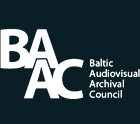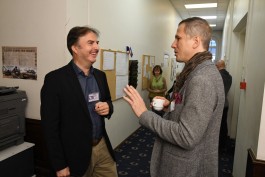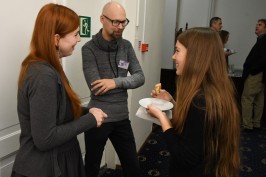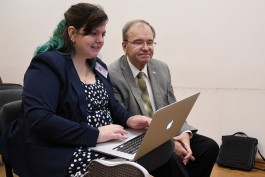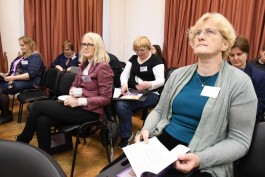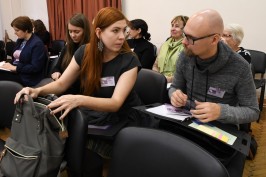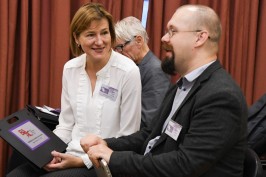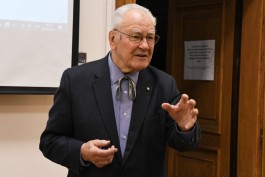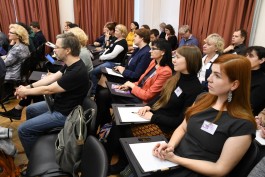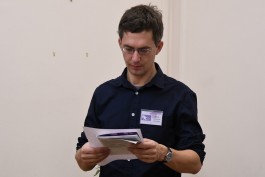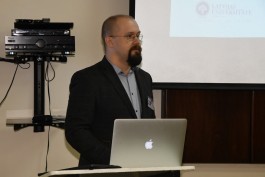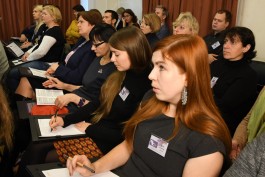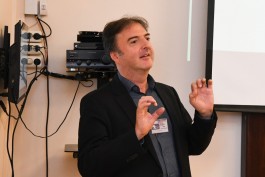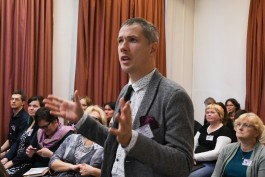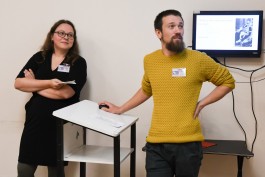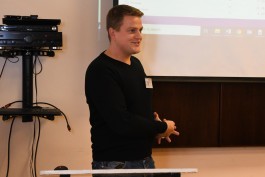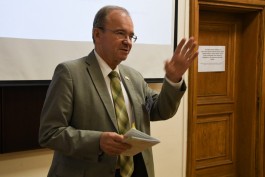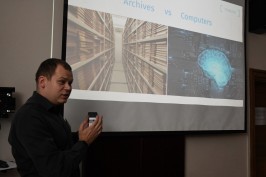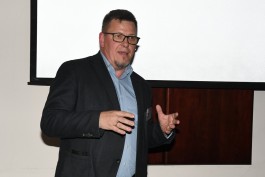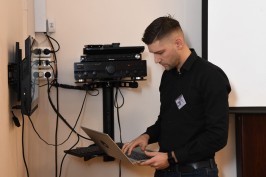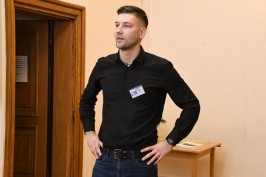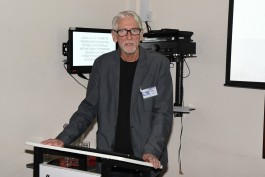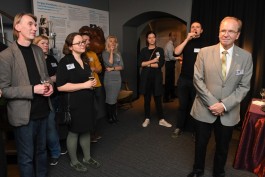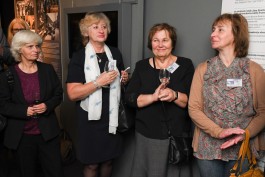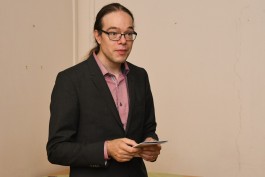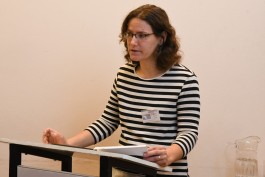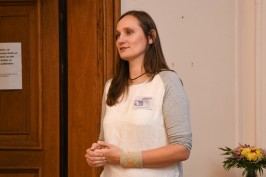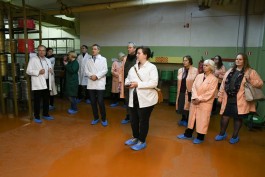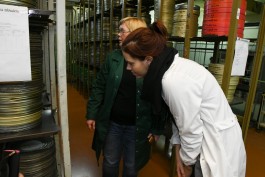BAAC Annual Conference report 2019
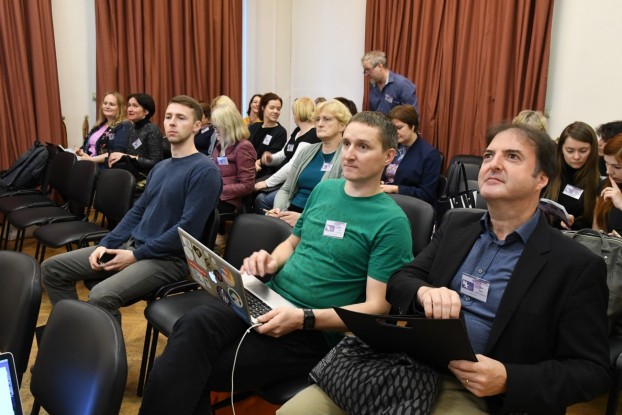
October 2019
By Tedd Urnes
The venue for the annual BAAC conference was well-known building located in the city of Riga:The former American embassy of Latvia. Because the permanent building of the Museum of the Occupation of Latvia is closed for reconstruction, the former building for the American embassy is used for the work of the Museum of the Occupation of Latvia. The Museum is one of the largest private museums in Latvia.
The participants of the conference were welcomed by the administrator of the conference, Lelde Neimane and the chairman of the Board of Occupation Museum, Dr. Valters Nollendorfs. He is a Professor Emeritus of German language and literature of the University of Wisconsin-Madison and the University of Nebraska-Lincoln. He lived abroad for many years and visited his motherland for the first time in 1988. Dr. Valters Nollendorfts was born in Riga but he fled Latvia for Germany in 1944. In 1950 he emigrated to Texas, USA, together with his familiy.
GREETNGS from the President of BAAC, Maria Mang, was read by Juozas Markauskas , the Vice- President of BAAC.
THE KEYNOTE SPEECH
The keynote speeches were given by two persons: Peteris Paikens from the University of Latvia and Tom Miles from the British Library.
SESSION 1 was monitored by Zane Grosa, Head of Audiovisual Reading Room at the National Library of Latvia and former President of BAAC.
Peteris Paikens presented a paper aiming at presenting a brief overview of current learning research on processing of visual and audio material. He wanted to evaluate various projects that are still at the proof-of-concept stage .
Tom Miles asked a question: How do cultural heritage organisations benefit from aggregating their content? He wanted to identify and to explore some of those benefits from the perspective of European Sounds,the domain aggregator fir European based at the British Library.
SESSION 2 was chaired by Vice-President of BAAC, Juozas Markauskas
The floor was given to Kristen de Hoog as the first presenter of the session. The title of the paper presented by Kristen de Hoog was: Getting into the game: What Eye is doing to participate like the Time Machine. She is working at Eye Filmmuseum. The Dutch Film Institute is responsible for archiving and showcasting the art of film, and above all: The film heritage of the Netherlands.
Eye is taking part in projects where participating organizations share their collections online.The Time Machine is one of the projects where Eye is involved. The improvement of catalogues and digital infrastructure are subjects for the work of Eye.
The presentation from National Archives of Estonia was done by Maarja Savan and Sven Lepa. The title of the paper is: A decade of describing people in the photo database FOTIS. The simplicity of the description tool and complexity of names combined with the creativity of the user describing the photos has led to issues with identifiers such as duplicate entries.
The University of Latvia is active in the studies of audiovisual materials utilizing content analysis software focusing on children born in Latvia. Oskars Gruzins who is a Doctoral Candidate, presented the paper dealing with how new technologies can assist the researcher in seeing unifying and differing characteristics in audiovisual collections. Children born in Norway during the Second World War was also a subject for the research work done by Oskars Gruzins.
The title of the paper: Analysis of Adiovisual Materials Utilizing Content Analysis Software: Example of Children Born of War in Latvia.
The final contribution of the first session was done by Gatis Karlsons from National Archive of Latvia.
He presented a paper dealing with different issues connected to audiovisual documents , standards and approaches to descriptions of documents.
SESSION 3 was monitored by Andris Kesteris
Valdis Takeris from NOSCOS,Latvia dealt with the issue of face recognition technology for audiovisual archives. Every face is different and every face matters. How can we describe a face in details using words? Question asked by Vakdis Takeris. New technology can make archives more searchable in the future. Large amounts of relevant materials remain in archives never to be used.Face recognition technology automatically tags people in photos and videos making archives searchable.
Alvis Dimitris from AS Fitek, Latvia, presented a paper dealing with cultural heritage. The title of his presentation: AS FIFTEK- Experience in the preservation of Cultural Heritage.
People worldwide must get access to documents stored in archives as original documents. Cultural heritage from any country can be accessible for people only if the collections are digitized with a correct content description.
Raivo Reigass from ALSO LATVIA asked the question: How new technology can bring to audiovisual materials? Visual recognition and voice command tools for making life easier for both staff of audiovisual archives and visitors of cultural institutions?
The last presentation of Session 3 was done by Tedd Urnes
The title of his presentation: Latvia History: Report of research in Audiovusual Archives for forgotten Norwegian soldiers killed and buried in Latvia during the Second World War.
The report dealt with research in different audiovisual archives situated in countries like Norway, Sweden and Latvia. The sources evaluated have been books, papers, feature movies, document archives , documentary films, newsreels and private visits to National archives.
OPENING RECEPTION
The venue of the reception was RIGA FILM MUSEUM. A nice place. The reception was supported by the Canadian Embassy in Latvia .Andris Kesteris who is President of the Baltic Federation in Canada, gave a welcome speech on behalf of BAAC. He commented on the history of BAAC and the importance of the work done by BAAC.
SESSION 4 was chaired by Erkki Nurmi from the University of the Arts Helsinki Library, Finland
Quality of cultural Heritage Collections: the Europeana Pubishing Framework coming of Age is the title of the presentation done by Adina Ciocoiu from Europeana Foundation
The Europeana Publishing Framework (EPF) is aiming at making it easy for Europeana data partners seeing the quality of metadata and content they have provided in their digital collections.
The second contribution of Session 4 was done by Maija Krumina from University of Latvia.
The National Oral History(NOH) project was established in 1992. 4500 audio-recorded life stories has been recorded in different places in Latvia. The work of digitization, description and transcribing of the sources of the archive is on-going work.
The second contribution of the Session was done by Andris Kesteris.
The title of his presentation: A Canadian view: An overview of activities in Latvian community in developing a local archive, digitization plans, partnerships and the eternal challange of financing
Latvians in Canada has established historical archives about Latvian history and culture. The stories are a part of Canadian history too.
The last presentation of the Session was done Lelde Neimane and Evita Fedentale.
The work of the Museum of the Occupation of Latvia was presented by showing an interesting film.
The collection of audiovisual archive was presented too.
Photos: AIVARS REINHOLDS (CC-BY)
